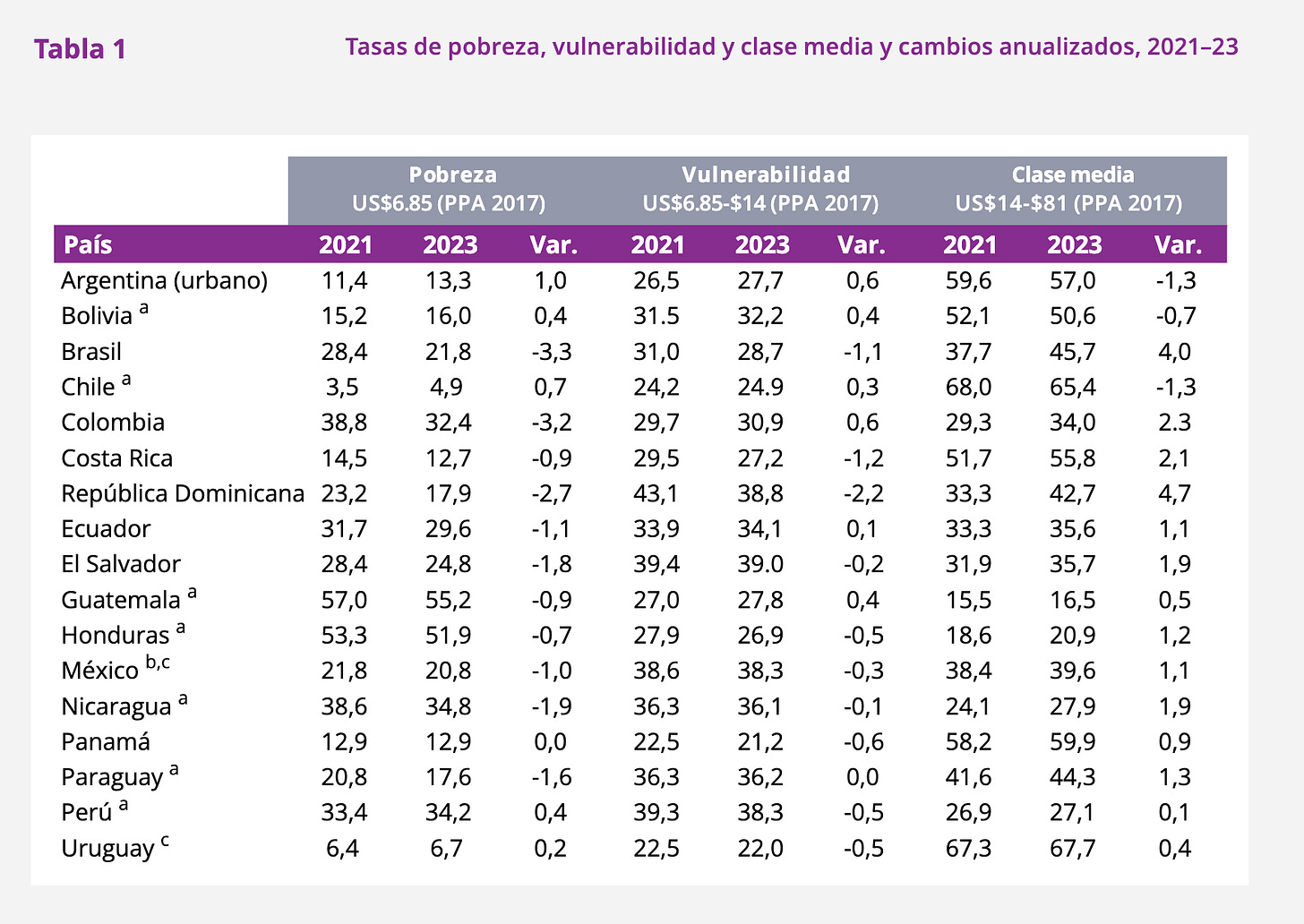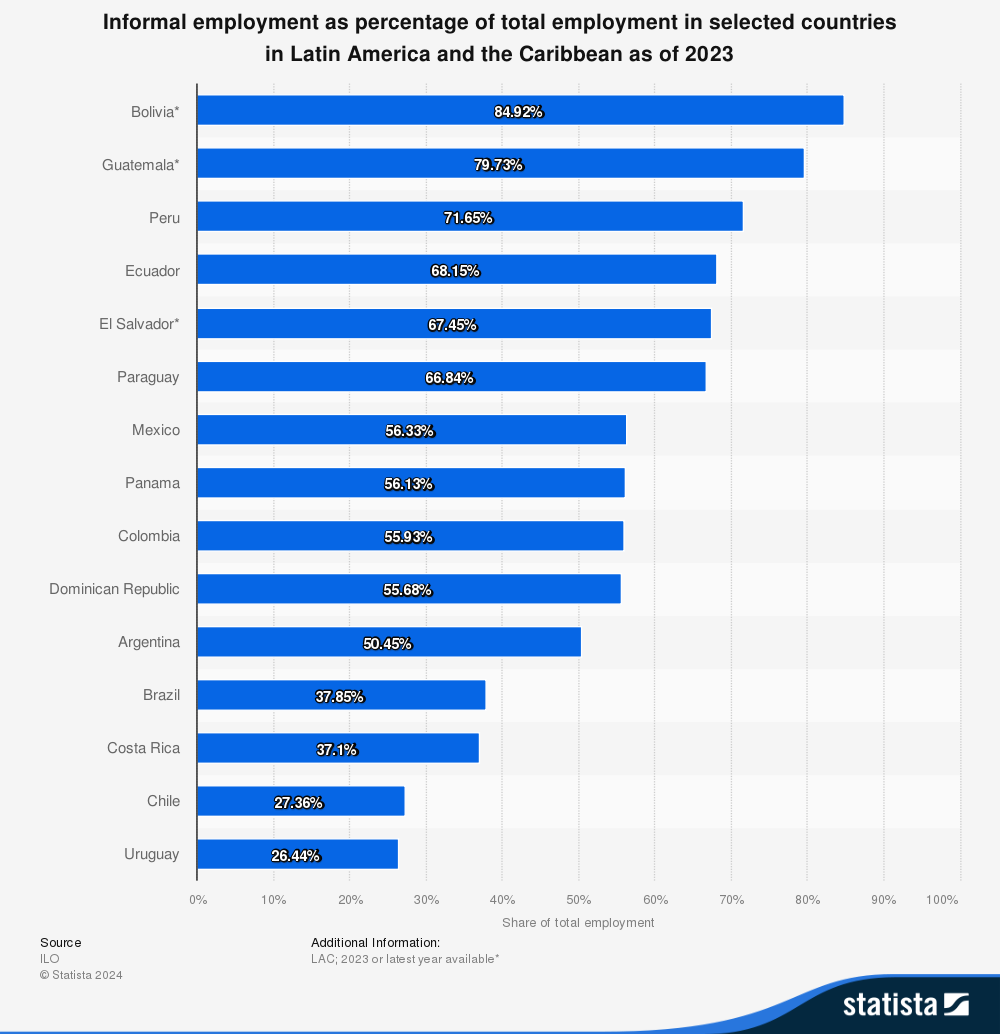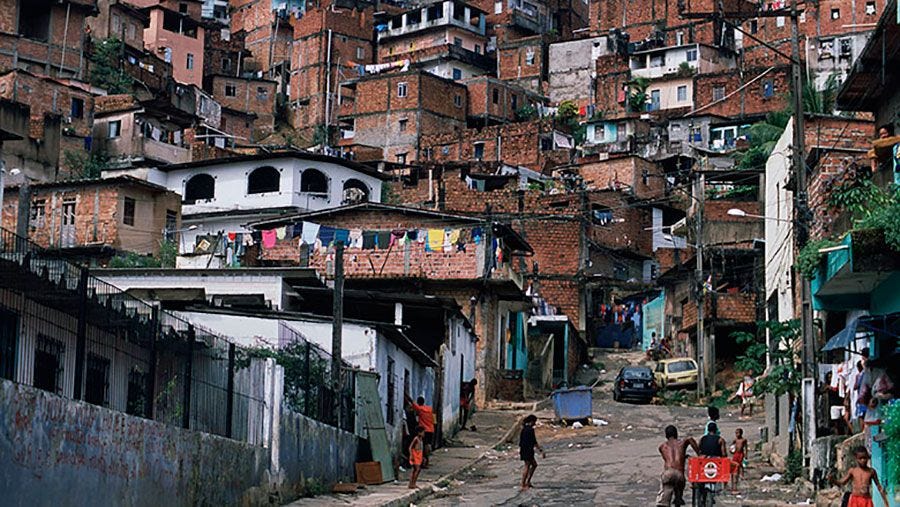Poverty, Informality and Vulnerabilities in Latin America
New reports show a slight improvement in poverty rates. By Prof. Nicolas Forsans
Latin America has long grappled with persistent poverty, inequality, and economic vulnerability. In recent years, however, the region has seen modest gains in poverty reduction, as highlighted in two recent reports by the World Bank and the OECD. While poverty rates have fallen to their lowest levels in decades—down to one in four people living below the poverty line—stagnating economic growth and high rates of informal employment continue to challenge sustainable progress. These reports underscore the complexity of the region’s socio-economic landscape: a slow economic recovery threatens gains, while informal work leaves millions without stable incomes or access to social protection. This article explores the latest data on poverty, informality, and inequality, examining the role of labour markets, government support, and the steps needed to achieve lasting change
A Slight Improvement in Latin America Poverty Rates in 2023
In a new report released this week, the World Bank announced that poverty in Latin America and the Caribbean (LAC) last year had fallen to its lowest point so far this century, with one in four people in the region living with an income below the poverty line (of upper-middle-income countries) of US$6.85/person per day (in PPP terms 2017). This represents a decrease in the poverty rate of 4.7% over 2021.
The report shows an interesting table (reproduced below) with details of poverty and vulnerability rates for each country of the region, as well as the proportion of households part of the ”middle class’ (ie, those with an income of US$14-81/person per day in PPP terms). Although the poverty rate has reduced relative to 2021 in most LAC countries —with the notable of Argentina — those percentages vary greatly across the region.

While encouraging, the World Bank adds that the “pace of poverty reduction, economic growth, and the creation of better jobs” had been slow since 2016, adding “positive labour market outcomes drove the decline in poverty levels in most countries between 2021 and 2023”, explaining almost two-thirds of the reduction.
Public transfers remain an important driver of poverty reduction, they say, but “their gradual elimination is affecting the income of the poorest households” in several economies of the region.
With only “modest” economic growth expected in the region in the foreseeable future, a slight slowdown in poverty reduction is predicted this year.
The Prevalence of Informal employment in Latin America
Another new report, this time on informality in the region. A report produced on 22 October by the OECD shows that two-thirds of the region's population lives in “informal or mixed households”, many of which rely entirely on informal work.
Informal work is often associated with low pay and insufficient contractual protection. On average, on an hourly basis, formal workers earn twice the amount of informal workers. Informal workers are also “six times less likely to hold an employment contract, which excludes social security contributions, than formal workers in their primary job”. Similarly, only 11.2% of informal workers in informal households have any written employment contract, a considerable risk to their economic security.
Such informality limits access to social protection and affects household well-being, particularly for women, youth and the elderly.
In response, governments in the region have implemented strategies to expand social protection and assistance, particularly during the COVID-19 pandemic. They took the form of emergency programmes and cash transfers as informal workers were disproportionately affected.
How informal workers were most affected during the pandemic
Work during the Pandemic
·As we assess what it takes to build a wealthier Latin America post-pandemic, our series continues with a focus on the world of work. The world’s longest and toughest lockdowns in the first waves destroyed livelihoods. Informal workers were most dramatically impacted while the rise in the gig economy is posing new challenges that will need addressing onc…
However, the OECD points out, tangible results and formalising a greater proportion of the workforce will require, not so much cash handouts, but “efforts to address the structural barriers faced by informal workers”.
Informality rates vary widely in the region, from 27% of the workforce in Chile and Uruguay to a high of 85% in Bolivia, 80% in Guatemala, 70% in Peru and Ecuador, and around 50% in Argentina, Mexico and Colombia.

Panel discussion on Inequalities in Latin America
Latin America and the Caribbean is one of the world’s two most unequal regions (the other is Sub-Saharan Africa. Inequality in Latin America has persisted at exceptionally high levels despite clear social pressures for its reduction and the widely shared conviction that excessive inequality is detrimental to economic progress.
The International Inequalities Institute at the London School of Economics (LSE) is hosting a public event on Tuesday 29 October 2024 between 6.30pm and 8pm to discuss to “some of the possible ways out of the inequality trap”. Bringing together academics and policymakers, the event will explore solutions and strategies to combat inequality in the region - in-person at the LSE in London, and online. Register here.
For more on inequalities in Latin America during the pandemic
The Cost of Deep-Rooted Inequalities
·Inequalities are staggering high in Latin America, impacting groups of the population very differently when faced with a shock of the magnitude of Covid. With the pandemic here to stay, not only is it causing a worsening of inequalities, but also have pre-existing inequalities made the impact of the first waves far worse for the most vulnerable segments…





